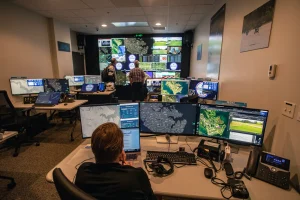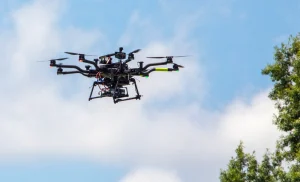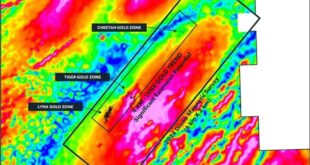The space agency reports that the drones successfully flew around obstacles and each other during takeoff, flew along a planned route, and then landed. This was all done autonomously without a pilot controlling the flight.
Pictured above, an Aerialworx Alta-8 small Unmanned Aircraft System testbed vehicle flies above the location in Hampton, Virginia.
Flying beyond visual line of sight from observers on the ground required special approval from the U.S. Federal Aviation Administration. And Nasa believes the test marks an important step towards advancing self-flying capabilities for air taxis.
ICAROUS
One of the technologies involved was ICAROUS (Integrated Configurable Architecture for Reliable Operations of Unmanned Systems). This software provides an autonomous detect-and-avoid function and is part of the overall system to maintain distance from other air traffic.
Another technology used was NASA’s Safe2Ditch system, which allows the vehicle to observe the ground below and make an autonomous decision on the safest place to land in the event of an in-flight emergency.
“Flying the vehicles beyond visual line of sight, where neither the vehicle nor the airspace is monitored using direct human observation, demonstrates years of research into automation and safety systems,” said Lou Glaab, branch head for the aeronautics systems engineering at NASA Langley.
Vertiport
Nasa believes it is safer, and more cost effective, to test self-flying technology meant for larger, passenger carrying air taxis on smaller drones. Also, it is also testing elements of automation technology using helicopters. It is all to help mature the autonomy well before self-flying air taxis are integrated into the skies.
“When you have multiple vehicles, all coming and going from a vertiport that is located adjacent to an airport or deep within a community, we have to ensure the automation technologies of these vehicles are capable of safely handling a high volume of air traffic in a busy area,” added Glaab.

The NASA researchers monitored the flights of the autonomous vehicles from the Remote Operations for Autonomous Missions UAS Operations Center at Langley, pictured above.
Images: NASA / Bowman
See also: Another Flying Taxi Company
 Unmanned Aerial Vehicle The latest drone news
Unmanned Aerial Vehicle The latest drone news



